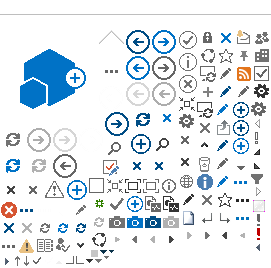As severe weather becomes more frequent, it's critical for agents to help clients understand what flood insurance does and doesn’t cover.
In the past 20 years, 99% of counties in the U.S. have experienced a flood, with nearly half (49%) of all counties experiencing a flood in the past five years, according to FEMA. Despite this, most homeowners do not purchase flood insurance. And even if they do, many consumers are confused about what is and is not covered by flood insurance.
Flooding across the Midwest and South in early April—which killed at least 21 people, according to NBC News—emphasized the need for clarity on flood insurance. In Kentucky, Tennessee and West Virginia, three states particularly impacted, flood risk has been rising, fueled by increasing rainfall, mountainous terrain and aging infrastructure, according to an analysis from Neptune Flood. However, fewer than 1% of homes across the three states have flood insurance, well below the national average of 3%.
As adverse weather events continue to increase in frequency and severity and humans continue to add infrastructure, changing the potential for flooding, agents can offer their expertise on this increasing risk.
Here are some points agents can highlight to help clients understand what is and isn't covered by a flood insurance policy:
1) Coverage limits. Homeowners have access to two markets for their flood insurance coverage: the National Flood Insurance Program (NFIP) and the private flood market.
“The standard for a homeowner is probably the NFIP, where clients would go first to enter the flood insurance marketplace," says Nick Orf, area vice president—flood, Risk Placement Services Inc. (RPS).
However, “the NFIP residential coverage is limited to providing $250,000 worth of building coverage and $100,000 worth of contents coverage," he points out.
Unfortunately, the median price of homes for sale in September 2024 was $425,000, according to Realtor.com, “so many clients wouldn't necessarily have the coverage they need through an NFIP policy," Orf says. In flood-prone areas, often “mortgage companies and lenders require the NFIP maximum available limits, but that doesn't necessarily mean that is the extent of a client's exposure and clients may want to consider getting more coverage," he says.
An alternative to the NFIP is the private insurance market where “you've got primary solutions that offer coverage limits up to $20 million, which is higher than the $250,000 offered by the NFIP," says Lauren Savage, president, private flood division, Tokio Marine Highland.
“If an agent cannot obtain enough coverage on the primary layer, excess flood coverage can be purchased," she says.
As agents learn about their clients and their circumstances, “it is important to highlight that some coverage is better protection than no coverage," says Cassie Masone, vice president, flood operations, Selective. “Many believe they must purchase full limits, but if a client is not required to buy flood insurance—no mortgage requirement exists—they can opt for lower limits. A lower-limit policy often has a lower premium, making it more economical."
2) Coverage restrictions. “Coverage limitations depend on the type and age of the structure, as well as the flood zone in which the property is located. Buildings with basements have limited coverage for damage in the basement area," Masone says.
“While specific details can be found in the flood insurance manual and the NFIP policy, coverage in a basement is limited to just 17 items and does not apply to items such as carpets, furniture and bathrooms," Masone explains. “Similarly, if a property is elevated, coverage limitations apply to the area below the first floor."
Further, “we also find that there is often confusion around the definition of a flood and when the NFIP policy responds," Masone says. “We often receive claims reported due to wind-driven rain. The NFIP flood policy does not cover these types of claims, because they do not meet the NFIP definition of flood."
Coverage provided in any flood policy will vary, and it is important for agents to work with their clients to help them understand the limitations before purchasing.
“For instance, customers and agents should be aware of what the loss valuation method is—actual cash value or replacement cost coverage," Savage says.
“Outside of a lender mandatory purchase requirement, unlike other lines of business where you're required to insure to value, a property owner can select their flood limit, but this amount of flood coverage may not be sufficient to repair or rebuild, especially considering the rising cost of construction," Savage says.
3) Market options. “Affordable flood coverage is available for most properties," Savage says. “As a trusted advisor, an agent should help a client understand the differences in each market's flood proposal. Going with the cheapest option may result in the client having inferior coverage."
Both NFIP and private market options should be presented to clients. “The NFIP can be very competitive in a number of areas, but the private market can also compete with the NFIP in other areas," Orf says. “Typically, in high-risk flood areas, the NFIP is going to be more competitive and in lower-risk areas the private market would be more competitive. That's not a guarantee, but in general, that's what we have noticed."
What is essential is “shifting that mindset of the property owner," Savage says. “Just because the property has not been impacted by flood in the past, that's not necessarily indicative of its future flood risk. The risk does exist."
Olivia Overman is IA content editor.
